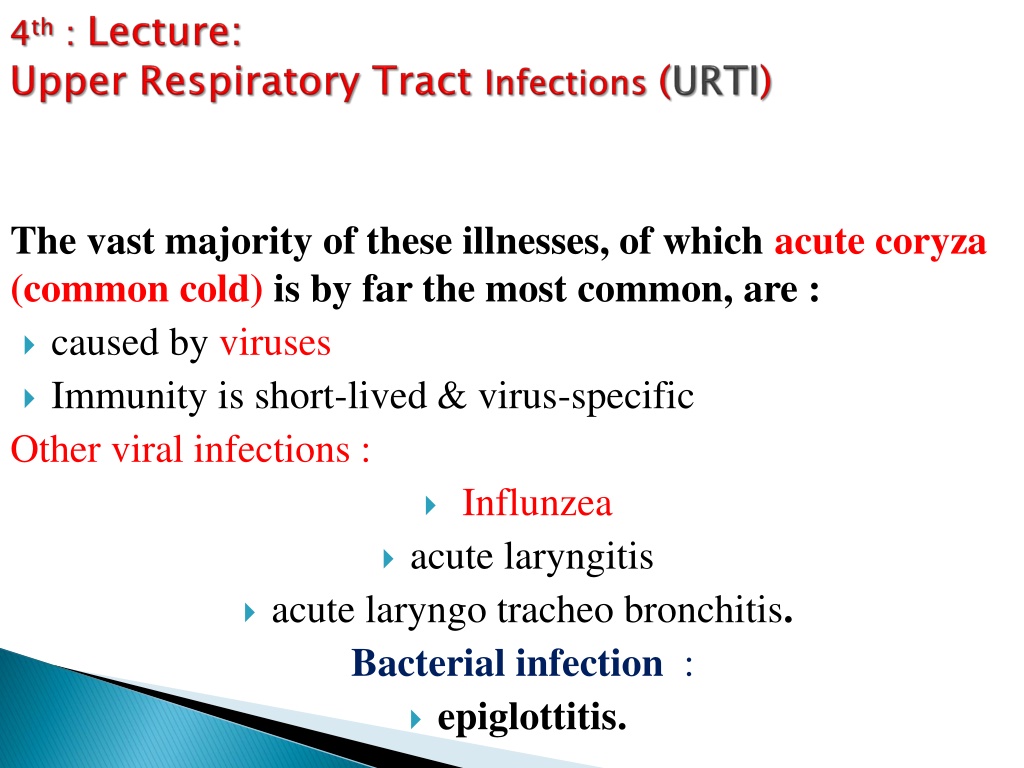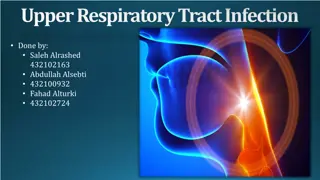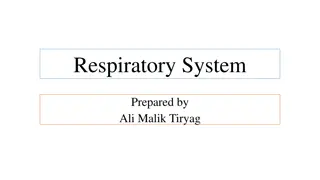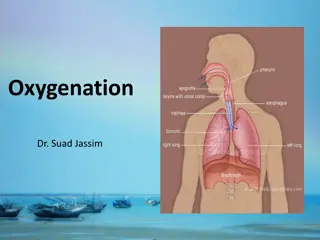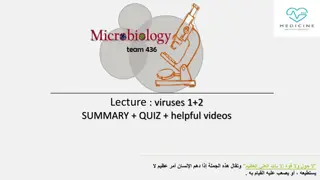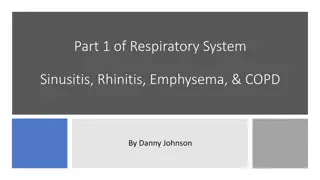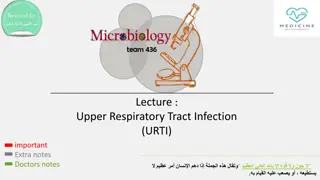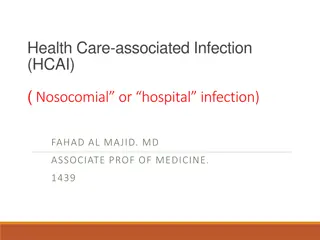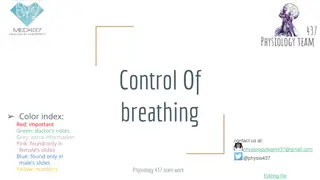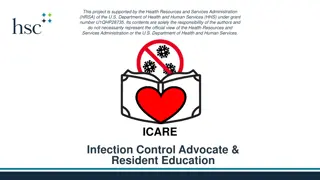Understanding Common Colds and Respiratory Infections
The majority of respiratory illnesses, such as the common cold, are caused by viruses, leading to short-lived immunity. Symptoms include nasal congestion, sore throat, cough, and fatigue. While most cases resolve without specific treatment, complications like sinusitis or pneumonia may occur. Antibiotics are usually unnecessary for uncomplicated cases. It's important to rest, take analgesics for symptoms relief, and maintain good hygiene to prevent spread.
Download Presentation

Please find below an Image/Link to download the presentation.
The content on the website is provided AS IS for your information and personal use only. It may not be sold, licensed, or shared on other websites without obtaining consent from the author. Download presentation by click this link. If you encounter any issues during the download, it is possible that the publisher has removed the file from their server.
E N D
Presentation Transcript
The vast majority of these illnesses, of which acute coryza (common cold) is by far the most common, are : caused by viruses Immunity is short-lived & virus-specific Other viral infections : Influnzea acute laryngitis acute laryngo tracheo bronchitis. Bacterial infection : epiglottitis.
Most patients with URTI : recover rapidly & specific investigation is indicated only in more severe illness ?. Viruses can be isolated from: exfoliated cells collected on throat swabs retrospectively by serological tests. fluorescent antibody technique. Throat swabs if streptococcal pharyngitis Blood picture: identify infectious mononucleosis, in CBP Radiographic may be required if an underlying chronic infection involving the sinuses is suspected.
highly infectious illness causes a mild systemic upset & prominent nasal symptoms It is due to infection by a wide range of respiratory viruses, of which: rhinoviruses, coronaviruses & adenoviruses. Infectivity from close personal contact in early stages spread is facilitated by overcrowding and poor ventilation. 100 different antigenic strains of rhinovirus, (difficult to confer protection). On average, individuals suffer 2-3 colds/year incidence lessens with age, ( accumulating immunity ).
Tiredness Slight pyrexia, malaise sore nose & (sore throat) if involve pharynx. Sneezing & profuse, watery nasal discharge are followed by thick mucopurulent secretions which may persist for up to a week. Horse voice if (larynx) involve If complicated by a tracheitis or bronchitis, chest tightness & wheeze Secondary bacterial infection occurs only in a minority of cases
Sinusitis. LRTI (bronchitis/pneumonia). otitis media, Hearing impairment Managements : Most do not require treatment. Analgesics & antipyretics for systemic symptoms. Nasal decongestant in some cases. Antibiotics not necessary in uncomplicated coryza.
Often a complication of acute coryza. Dry sore throat, Hoarse voice or loss of voice. Attempts to speak cause pain. Initially, painful & unproductive cough. Stridor in children (croup) because of inflammatory oedema leading to partial obstruction of a small larynx Complications rare, MAY include: Chronic laryngitis. tracheitis, bronchitis, pneumonia Treatments: Rest voice. Analgesics for relief of discomfort and pyrexia. Steam inhalations may be of value Antibiotics not necessary in simple acute laryngitis
Influenza is an acute systemic viral infection that primarily affects the respiratory tract; it carries a significant mortality. It belongs to the orthomyxo virus group & exists in two main forms, A and B. Influenza B : localized outbreaks of milder nature influenza A: world-wide pandemics, new antigenic variants at irregular intervals.
The most serious influenza pandemic occurred in: 1918, more than 20 million deaths worldwide. 1957, a major shift in the antigenic make-up of the virus led to the appearance of influenza A2 type H2N2, which caused a world-wide pandemic. 1968 further pandemic occurred owing to the emergence of Hong Kong influenza type H3N2, A further pandemic is likely in the next few years. Recent concerns have focused on the H5N1 strain of influenza A which was previously confined to birds but can be contracted by humans who are in close contact with infected poultry.
The illness starts abruptly with a fever, shivering and generalized aching in the limbs, severe headache, soreness of the throat, dry cough that can persist for several weeks. Diarrhoea occurs in 70% of cases of H5N1. prolonged period of debility and depression :Complications Secondary bacterial infection: Strep.pneumoniae , H. influenzae Secondary pneumonia caused by Staph. Aureus is rarer, but more seriousa mortality of up to 20%. Post infectious encephalomyelitis rarely occurs
Laboratory diagnosis is not usually necessary, but a definitive diagnosis can be established by demonstrating: a fourfold increase in the complement-fixing antibody haemagglutinin antibody measured at onset and after 1 2 weeks by demonstrating the virus in throat or nasal secretions.
bed rest & paracetamol antibiotics to prevent secondary infection in those with: chronic bronchitis, cardiac& renal disease. Neuraminidase inhibitors :may help to shorten the duration of symptoms, if given within 48 hours . The cost benefit remains unproven but currently recommended in the UK for patients with : suspected influenza over the age of 65 & at-risk adults, (to reduce admissions to hospital )
bed rest & paracetamol, antibiotics to prevent secondary infection in those with: chronic bronchitis, cardiac& renal disease Administration of neuraminidase inhibitor, oral oseltamivir (75 mg twice daily) or inhaled zanamivir (10 mg twice daily) for 5 days, can reduce the severity of symptoms if started within 48 hours of onset prophylaxis in high risk individuals during the flu' season. Resistance can emerge to all of these agents and so updated local advice should be followed
Protection by vaccines is effective; in up to70% of people, but only lasts for about a year. Routine vaccination is recommended for: over 65 years of age younger people with chronic heart disease Chronic lung disease (including asthma) chronic kidney disease diabetes mellitus those who are immunosuppressed During pandemics: in key hospital and health service personnel
Initial symptoms like common cold. Sudden paroxysms of cough accompanied by stridor &breathlessness. Contraction of accessory muscles and indrawing of intercostal spaces. Cyanosis and asphyxia in small children, if appropriate treatment not given . Complications: Asphyxia, Death. Super infection with bacteria, especially Strepts, pneumoniae &Staphy. aureus Viscid secretions may occlude bronchi. Treatments: Inhalations of steam and humidified air/high concentrations of oxygen. Endotracheal intubation or tracheostomy to relieve laryngeal obstruction & allow clearing of bronchial secretions intravenous antibiotic therapy for seriously ill patients. Maintain adequate hydration
Fever and sore throat, rapidly leading to stridor because of swelling of epiglottis and surrounding structures ( infection with Haemophilus influenzae). Stridor and cough in absence of much hoarseness may distinguish acute epiglottitis from other causes of stridor? Death from asphyxia which may be precipitated by attempts to examine the throat avoid using a tongue depressor or any instrument unless facilities for endotracheal intubation or tracheostomy are immediately available ? R/: Intravenous antibiotic therapy essential. Other measures as for acute laryngo tracheo bronchitis
Acute bronchitis Often follows acute coryza. Initially irritating unproductive cough, retrosternal discomfort of tracheitis. Chest tightness, wheeze and breathlessness when bronchi become involved. tracheitis causes pain on coughing. Sputum is initially scanty or mucoid. After a day or so, sputum becomes mucopurulent, more copious & often blood-stained. Acute bronchial infection ,may be associated with a pyrexia of 38- 39 C &a neutrophil leucocytosis. Spontaneous recovery occurs over a few days
